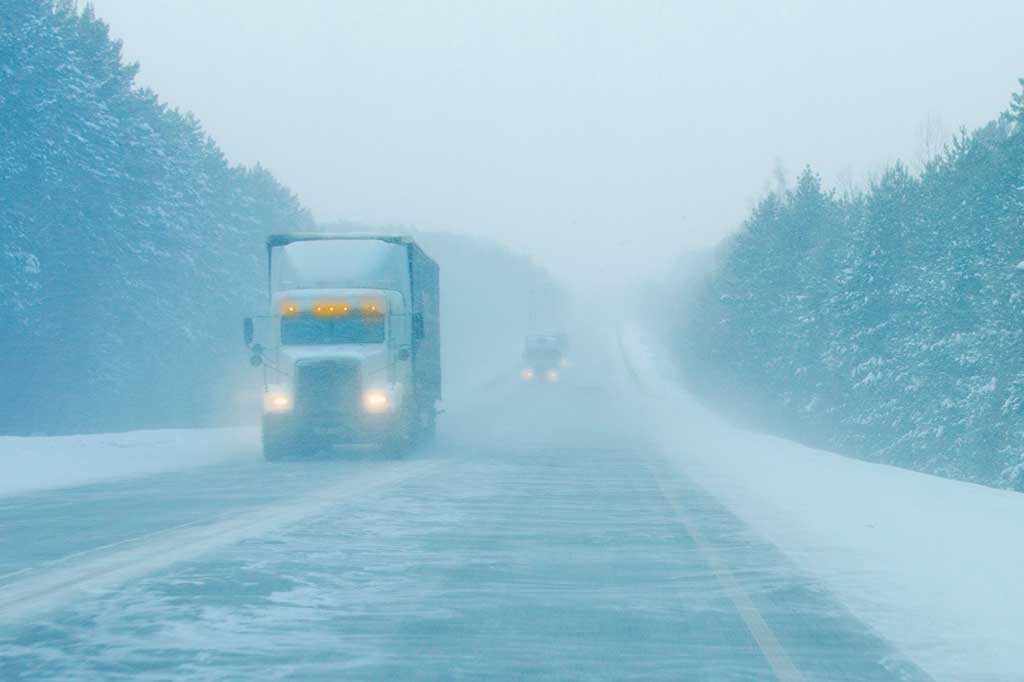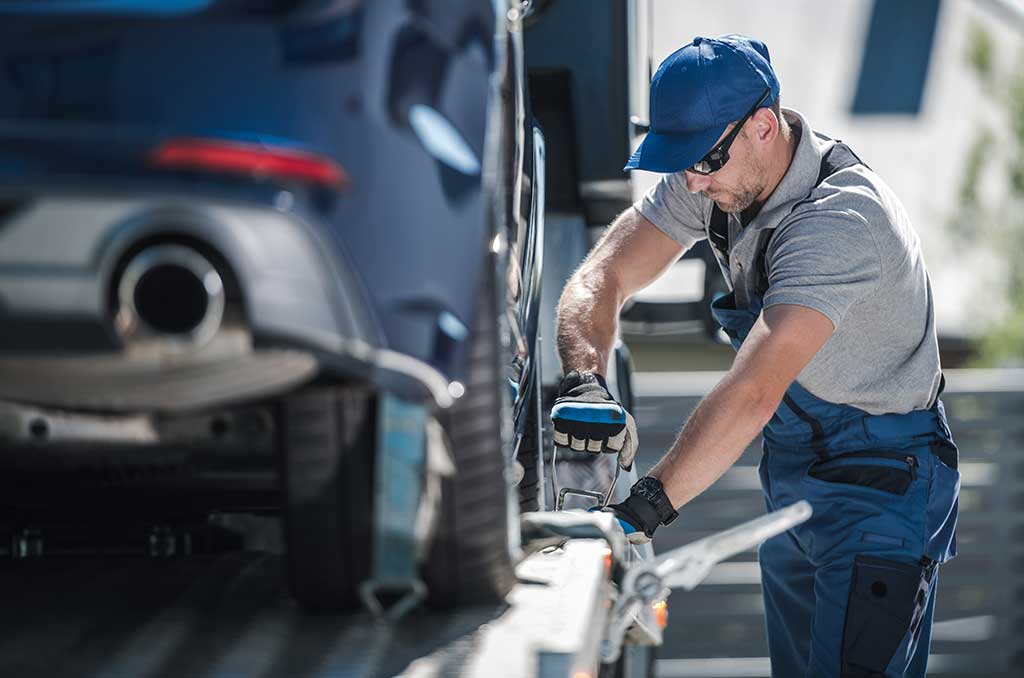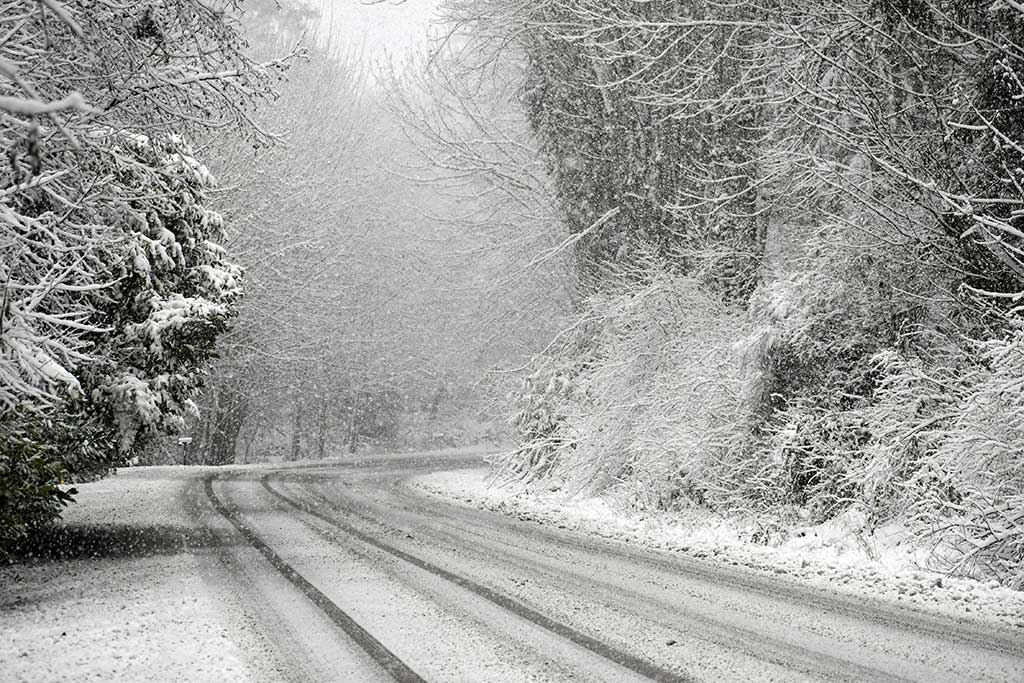Every customer has different needs for shipping their vehicle. This is why you have the option of open or enclosed vehicle transport.
There are a variety of considerations with both options. Determine what’s best for your specific situation by weighing the pros and cons of each transport method.
Open vs enclosed vehicle carriers
First, you should understand the difference between an open vehicle carrier and an enclosed vehicle carrier. Open carriers are just that, open. No sides or roof, so vehicles are exposed throughout the trip.

The open car carrier involves a diesel truck with the capability to haul a two-level trailer, typically between 75 and 80 feet long. Depending on the size, weight, and current shipping demands, multi-car open carrier trailers can accommodate 8 to 10 vehicles at once. This is the most common type of car carrier.
An enclosed vehicle carrier is a fully enclosed trailer with a roof and four sides. This type of car hauler only allows for a few cars to be shipped at a time. It can be harder to find an enclosed vehicle carrier due to the lower supply of enclosed carriers.
Contrary to open carriers, most enclosed carriers are equipped with either lift gates or low-profile ramps to handle vehicles with a clearance as low as 1″ without damaging the bottom while loading and unloading. But keep in mind that only certain sized vehicles can fit into the enclosed carriers. The dimensions of the enclosed carriers are between 5′ and 8.5′ wide, 8′ and 32′ long and 7′ and 10′ high. It’s important to check with the company you plan to use to determine their specific requirements.
Cost difference

Car transport has many different variables that determine the cost of shipping your vehicle. Many people find open vehicle transport to be the best option simply because it’s the most affordable. Open car shipping is more fuel efficient than its enclosed carrier counterpart, which is a big part of why the cost is less.
While open car shipping is more affordable than enclosed, it may be worth the extra cost if you have a high-end, custom or antique car that must be protected. Due to the limited number of carriers offering enclosed service, less demand and lower fuel efficiency, transporting vehicles this way can be approximately $300-$1,000 more than an open car carrier.
There are a couple of options when it comes to enclosed car transportation. Multi-car enclosed trailers can hold up to seven cars and are usually the more inexpensive of the two options. Two- or one-car trailers are understandably more expensive.
Exposure to the elements
If you’re planning to relocate a new, luxury, or collector vehicle, you may want to consider an enclosed option.

A fully enclosed trailer offers better protection from external hazards such as bad weather and poor road conditions providing 360-degree protection with a roof and four sides. The one downside is that because it’s fully enclosed, the driver often is unable to do routine visual checks along the way.
An open carrier offers less protection against the elements and is less secure than a fully enclosed trailer. Your vehicle is exposed to the same elements you’d face while driving, such as sun, snow, dust, debris and other things. However, some customers like the fact that the driver of the open carrier can inspect the cars from time to time during the shipping process.
Scheduling and delivery times
It’s easier to schedule transport in an open car hauler simply because there are more of them in operation.

Scheduling is often more flexible, and you may find quicker turnaround times compared to enclosed shipping. You might even be able to get your vehicle shipped on short notice, which is a big bonus when you’re in the middle of a hectic move.
But it’s also easier to schedule an open carrier because of the number of vehicles it can accommodate. Normally, a covered carrier can only hold 2-3 (or up to 7 with a multi-car enclosed carrier) vehicles compared to an open carrier, which can handle 8 to 10 vehicles. However, an enclosed carrier will have fewer vehicles to pick up, and fewer vehicles to deliver, which may speed up delivery times.
Open transport can take up to 17 days to ship a vehicle cross country and enclosed can take up to 25 days. But it all depends on the driver’s schedule from origin to destination.
Insurance policy limits
The insurance limits for open and enclosed car shipping can vary. But, the higher the asset’s value, the more coverage you’ll want your carrier of choice to have.

Enclosed car carriers typically carry a minimum of $250,000 and up to $1,000,000 of coverage insurance while the open car carriers carry a minimum of $75,000. This is something to consider when choosing the right type of shipping for your vehicle, especially if it’s a specialty car or antique of high value.
At Reindeer Logistics, we’ve spent decades building relationships with licensed, bonded and insured car carriers across the nation. Our network of car shipping carriers – both open and enclosed – are experienced with moving vehicles of any size or model. All Reindeer car shipping contractors are required to provide proof of required levels of insurance coverage (a minimum of $1,000,000 liability and $100,000 cargo).
Fuel efficiency
Shipping a car in an open carrier is more fuel efficient than in an enclosed one.

First, an open-air trailer generally weighs less than an enclosed trailer, so fuel costs are lower. Also, they can transport more vehicles at once, making it the most cost-effective and fuel-efficient option.
Weather impacts
The enclosed shipping method is least dependent on weather conditions because your vehicle is protected from the elements whereas in an open carrier, it’s not.

There also may be weather scenarios in which the open car carrier would be unable to continue.
But weather affects both transport methods during certain seasons. Rates tend to be higher at times of the year when the weather is expected to be bad. Also, if the weather prevents the driver from taking the planned route and an alternative must be found, this can delay your vehicle delivery and add to the cost. In essence, it’s important to take the weather and possible climate differences into account when planning your car transport.
The bottom line
When shipping your vehicle, you have a tough choice to make – open or enclosed carrier. There are advantages and disadvantages to both, but the decision is ultimately up to you and your unique situation.
Reindeer’s experts will help guide you to a decision that works best for you. We typically advise customers to get a quote for open and enclosed shipping so they can compare the cost difference for themselves.
No matter your choice, we’re here to help you get your car safely and securely to your destination. Contact us today to get started!
Privacy Overview
| Cookie | Duration | Description |
|---|---|---|
| cookielawinfo-checbox-analytics | 11 months | This cookie is set by GDPR Cookie Consent plugin. The cookie is used to store the user consent for the cookies in the category "Analytics". |
| cookielawinfo-checbox-functional | 11 months | The cookie is set by GDPR cookie consent to record the user consent for the cookies in the category "Functional". |
| cookielawinfo-checbox-others | 11 months | This cookie is set by GDPR Cookie Consent plugin. The cookie is used to store the user consent for the cookies in the category "Other. |
| cookielawinfo-checkbox-necessary | 11 months | This cookie is set by GDPR Cookie Consent plugin. The cookies is used to store the user consent for the cookies in the category "Necessary". |
| cookielawinfo-checkbox-performance | 11 months | This cookie is set by GDPR Cookie Consent plugin. The cookie is used to store the user consent for the cookies in the category "Performance". |
| viewed_cookie_policy | 11 months | The cookie is set by the GDPR Cookie Consent plugin and is used to store whether or not user has consented to the use of cookies. It does not store any personal data. |